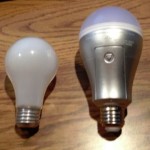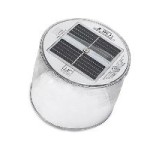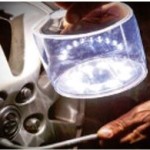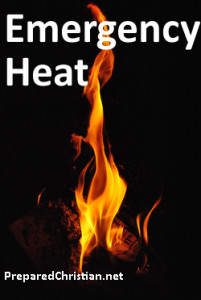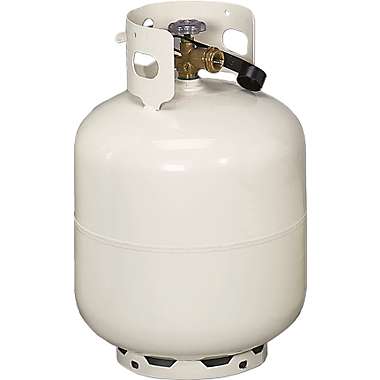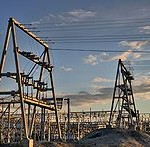This article was written by Dan Sullivan from Survival Sullivan. Check out Dan’s blog, I think you’ll enjoy it.
8 Easy Ways to Start a Fire
How many ways of starting a fire do you know? No matter how many you answered, I’m sure you can learn a few more after reading this article. You never know when you’re out in the wild, desperately needing a fire and you realize your primary and secondary means of starting a one aren’t working.
Accidents will happen… your bug out bag could fall into a body of water, possibly compromising some of your stuff and, as you’re desperately trying to start a fire using your soaking wet matches, you begin to realize the severity of the situation.
Before we discuss all the different ways to start a fire, it’s worth mentioning you need have tinder readily available to quickly catch those sparks. Bark, dry glass, small sticks, cotton balls and even paper will do the trick. So, without further ado, let’s see all the various ways to start a fire.
Using an Obvious Fire-Starting Device
I’m not going to spend too much time talking about Bic lighters and waterproof matches. You probably have them in your bug-out bag (BOB) or your get home bag (GHB) already. Bic lighters are great but at some point, they will fail you, so be sure to check that they’re working from time to time. You can do this, for instance, right when you’re rotating your food stockpile, for instance.
Using the Bow Drill Method
When I think about starting a fire without matches, the thing that always comes to mind is the bow drill method. The reason it’s so popular is that it’s very effective. Not as good as striking a match, obviously, but works really well when all else fails. Under normal circumstances, it shouldn’t take you more than 5 minutes to get it going.
The most important thing is to have the right wood. You need dry wood and, ideally, you’ll want to make the spindle and the floorboard from the same tree, even from the same log for best results. Here’s a quick list of types of wood that work well with this method: white cedar, willow, alder, and maple. Willow will work best, particularly if you’re new at this.
Using the Hand Drill Method
If you don’t have the time or the right items to use the bow drill method, how about just using your bare hands to rotate the stick? It’s hard work but, with the right wood, tinder and your tireless hands, you will eventually get that spark.
Using a Pocket Knife, a Piece of Flint and Char Cloth
Char cloth ignites with the smallest spark and you can help starting it with your pocket knife and flint.
Using a Lens
There are a wide variety of lens available to help you start a fire. For example, a Fresnel lens is small, cheap, lightweight and fits just about anywhere in your bug-out bag or get home bag. Of course, if you don’t have one, you can use a magnifying glass, binoculars and even your eyeglasses to achieve the same result.
And if you’re really feeling lucky, you can use unconventional items such as a condom filled with water or even an ice cube. These can both focus the sun rays into a single point, raising the temperature and causing whatever tinder you have there to ignite.
Using Batteries
Batteries alone can’t do the job but, with the help of some fine grade steel wool or gum paper, it’s totally possible. You’re gonna need a 9V battery and the really good news is, this will work on all weather conditions… and it is fast. The moment the battery makes contact with the wool, sparks start showing up so make sure you have that tinder ready.
Starting a Fire with Water
First of all, I should say that the water needs to be contained in either a plastic bottle or a lightbulb. You will use them as makeshift magnifying glasses to focus the sun rays on one (or multiple) pieces of paper. If you have paper written in black ink, that’s even better, it’s going to ignite faster.
Mixing Chlorine and Break Fluid
When it comes to using chemical reactions to start a fire, one of the most popular ways is to use chlorine and break fluid. The reaction doesn’t happen instantly, it takes about 20 to 30 seconds and the flame doesn’t last for more than a few seconds. Use small quantities of each and, whatever you do, do NOT get too close during those first 30 seconds when nothing seems to be happening. Also, wearing a face shield mask is even better to decrease your chances of getting injured.
What’s next?
Practicing all the ways to start a fire is very important as you don’t want your first attempt to be during an SHTF situation, when your life is on the line. Make sure you have everything you need and keep trying if it doesn’t work the first time.
Now that you’ve got that fire going… how about learning how to cook? I’ve put together a comprehensive list of outdoor cooking methods, you can check it out right here and… I have a feeling you might like it!
Stay safe,
Dan F. Sullivan
Please click here to vote for Prepared Christian as a top Prepper site!
If you liked this article please think about sharing it on the social media listed below, thanks!





